PROTECT YOUR DNA WITH QUANTUM TECHNOLOGY
Orgo-Life the new way to the future Advertising by AdpathwayIt’s officially fall, and our warm-season flowers may be enjoying a fresh flush of color as temperatures mellow. While some of us are still in the lingering heat of summer, shorter days spell reprieve. Others have experienced fall’s first frost, or it’s fast-approaching.
Fall brings flowerbed maintenance, depending on the extent of cleanup you opt to do. It’s time to pluck spent annuals and selectively deadhead and cut back perennials. Both deadheading and cutting back are pruning methods, and there are reasons for both, depending on species and timing.
When it comes to deadheading vs. pruning, we’ve got the schedule and reasons for both. A little prep now provides the best foundation for successful overwintering of our favorite blooming perennials.
Deadheading vs. Pruning
 Deadheading is a form of pruning.
Deadheading is a form of pruning. A form of pruning, deadheading is the removal of spent flowers. Pruning can entail deadheading practices and other more major cuts like rejuvenation pruning (major cutback of overgrown plants) or removing branches preventatively for improved form and health.
In the fall, we may opt to deadhead or intentionally choose not to. The same goes for more extensive pruning. Some perennials we’ll want to cut back with dormancy, while others can remain standing.
For our flower gardens, fall pruning takes us from deadheading and light trimming in early, warm conditions to drastic cutback after a hard freeze. In warm climates where frost is still a couple of months off, you have time to trim ragged or overgrown plants.
Clip away spent flower stalks, diseased leaves, and brown, crispy stems from annuals and perennials. Allow six to eight weeks before fall’s first anticipated frost when pruning any healthy green growth, as this stimulates new growth that’s susceptible to cold damage.
In cold climates, you’ll soon be ready to cut back certain perennials after they enter dormancy. With a few frosts, the garden enters the quiet season.
Reasons to Deadhead in Fall
 Deadheading keeps plants looking tidy.
Deadheading keeps plants looking tidy. During the growing season, deadheading promotes faster reblooming for many annuals and perennials. While not essential to growth, removing spent blooms redirects energy from seed production into further flowering.
In general, deadheading during the summer can help to:
- Improve flowering and encourage new buds
- Maintain form and a tidy appearance
- Limit reseeding to prevent unwanted volunteers
- Increase air circulation among stems and leaves
- Prevent pests and diseases from harboring in wet, decaying petals
In autumn, deadheading doesn’t promote ongoing blooms as the growing season winds down. By late season, we’ll want to foster those we want to naturally reseed in our flowerbeds by leaving spent blooms and seedheads intact.
Stop deadheading by early to mid-September to let blooms go to seed. Many, including native selections, self-sow by scattering and with wind and wildlife dispersal to expand the colony. Fall seeds also provide forage for birds and small mammals heading into winter.
To Prevent Reseeding

Deadhead fading blooms on species you don’t want to reseed. If the selection is too vigorous with an aggressive spread, if space is an issue, or you don’t want pop-up volunteers, continue deadheading through fall to prevent seed drop.
Annuals and perennials, including flowering herbs, have the capacity to drop seed that overwinters until conditions are right for germinating in the spring.
For Seed Collection
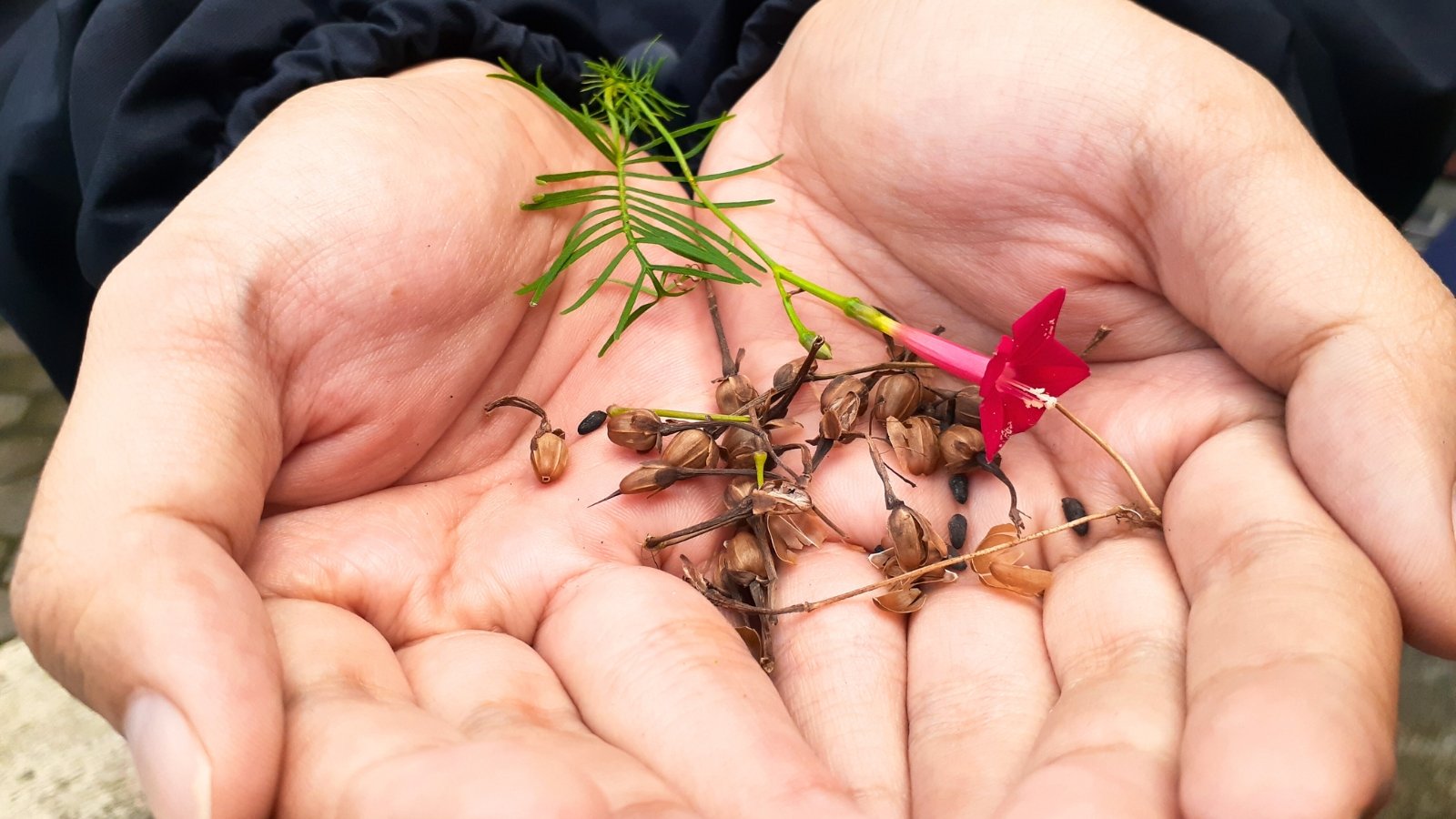 Remove flower stalks to collect their seeds.
Remove flower stalks to collect their seeds. Another reason to remove flower stalks is for seed collection. After the flowers fade and seedheads dry, they’re prime for picking. In the fall, native perennials are among the best to save and store. They drop and disperse during the season and receive cold stratification over the winter, which is necessary for many favorites to germinate.
- Amaranth
- Calendula
- Celosia
- Cleome
- Cosmos
- Petunia
- Scarlet flax
- Zinnia
Perennials that reseed include:
- Black-eyed Susan
- Coreopsis
- Lupine
- Milkweed
- Monarda
- Prairie coneflower
- Swamp sunflower
- Sweet Joe Pye weed
- Yarrow
- Herbs that reseed:
- Anise Hyssop
- Chamomile
- Feverfew
- Lemonbalm
- Mint
- Oregano
- Thyme
Fall Pruning
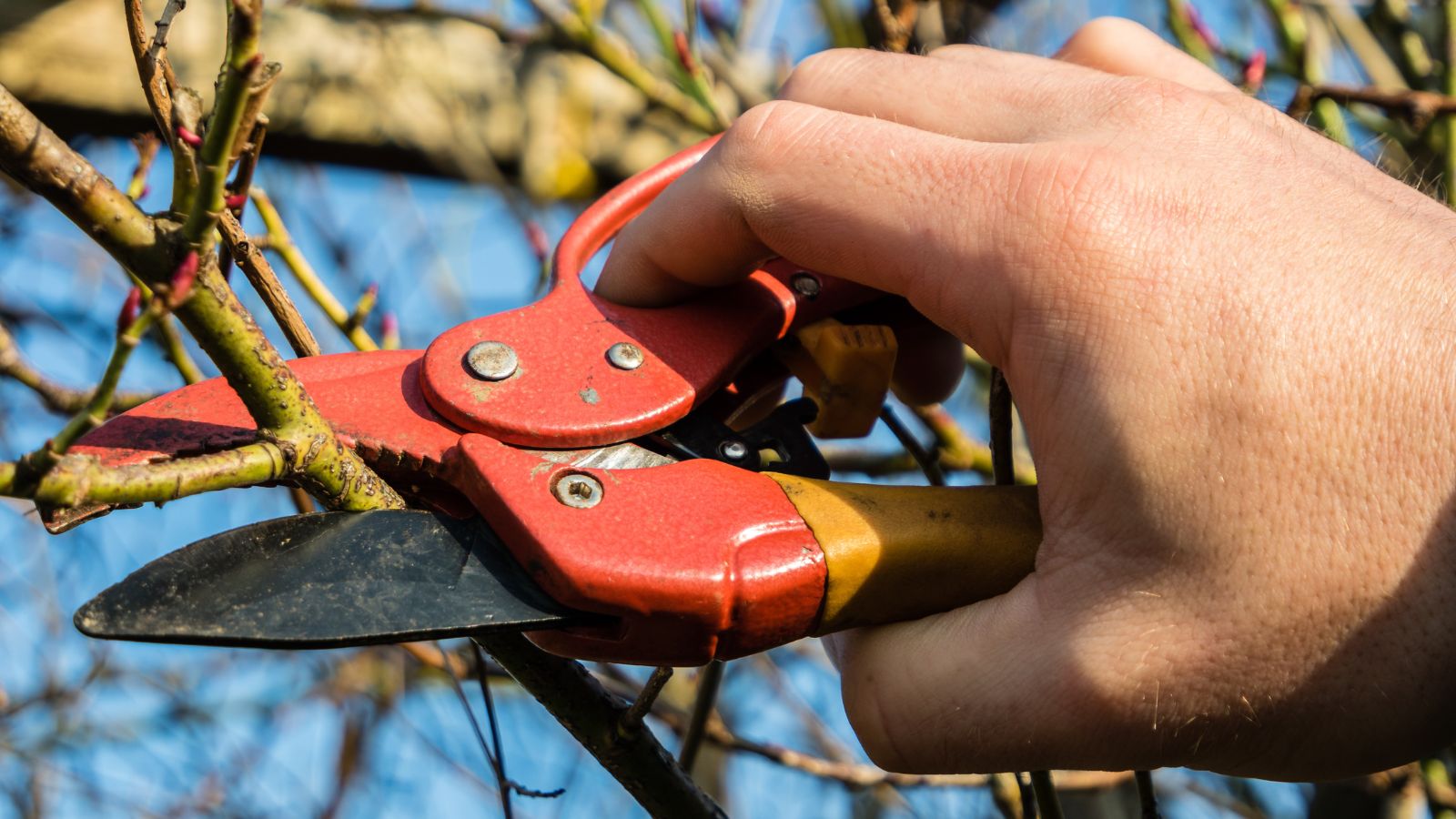 Pruning is typically light in fall.
Pruning is typically light in fall. There are two primary types of pruning in fall: one is before the first heavy frost to thin stems, improve air circulation, remove diseased portions, and manage size. The other is cut back after a few frosts to promote successful overwintering.
Some perennials are better left standing during dormancy, whether for insulative purposes or to promote nesting and habitat sites for pollinators and wildlife. Others do best with cutting back to the crown, mainly to reduce diseases and harboring spores over the winter.
Prune in early fall to deadhead, shape, and remove diseased or dying plant parts. Preventing overgrowth improves air circulation to help reduce diseases. It also directs energy to the roots as plants prepare for overwintering.
After a few hard frosts, cut back perennials that benefit.
The Right Tools
 Clean your tools before you start pruning.
Clean your tools before you start pruning. For fall pruning, bypass pruners are best for most cuts, like deadheading and cutting back thin stems. Long-handled loppers make easy work of thick, woody, or hard-to-reach branches.
Sharp tool blades make clean cuts, whereas dull blades can shred or tear stem tissues and create wounds where pests and diseases may enter. Sanitized tools help minimize the spread of spores and pathogens that travel between plants.
A simple alcohol wipe on the blades does the trick. A dip or spray of rubbing alcohol (70% or higher concentration of isopropyl alcohol) also works well.
The Right Cut
 Cut in the right spot to prevent damage and stunted growth.
Cut in the right spot to prevent damage and stunted growth. With deadheading and cutting back stems, look to cut just above a leaf node. Deadhead to the first set of healthy leaves (or lower for shaping). Make a straight cut or angle the cut downward toward the center of the plant. Any clean cut will work.
Bed and Debris Cleanup
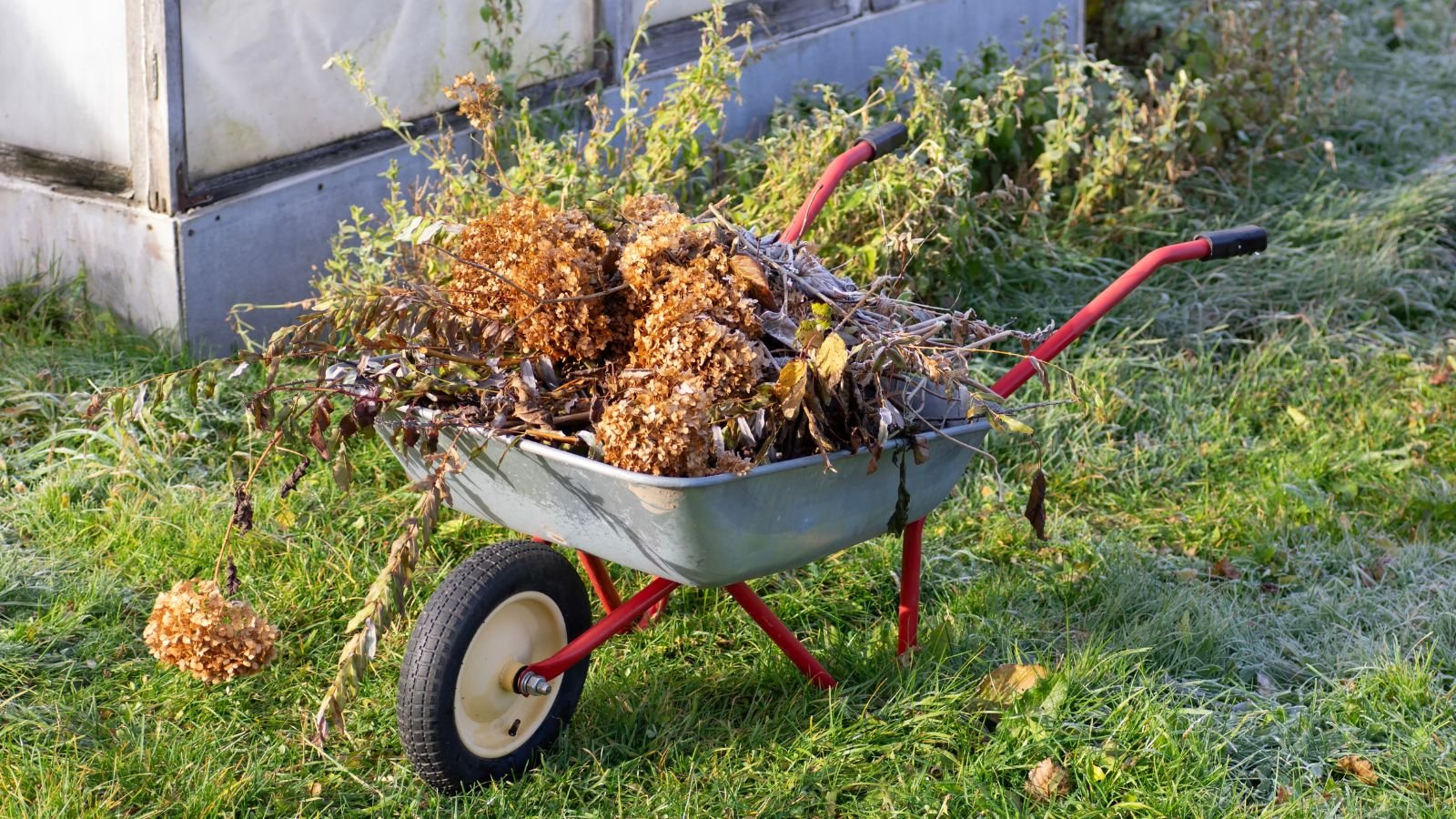 After pruning, remove debris to reduce disease risk.
After pruning, remove debris to reduce disease risk. After pruning, to prepare the flower garden for winter, remove fallen leaves, blooms, and debris to improve growing conditions for the following season. Debris harbors pests and diseases that overwinter to reemerge in spring. A light rake sweeps the material, and the end-of-season spruce-up tidies the area.
Weeding
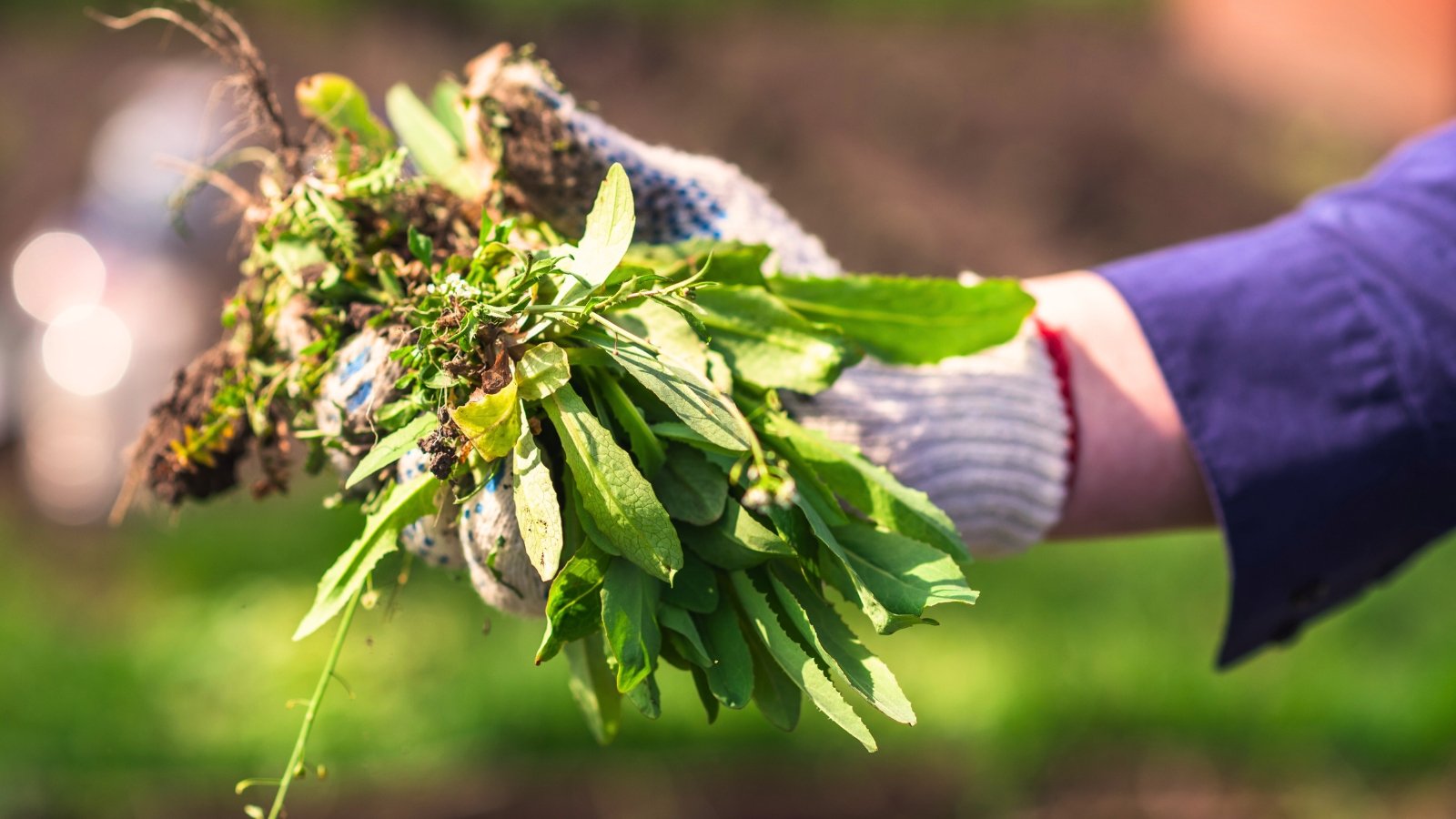 Also remove weeds as you see them.
Also remove weeds as you see them. Just as our flowers are setting seeds, so are weeds. Weeds compete with our garden selections for resources like nutrients, moisture, and sunlight, but they also host pests and diseases over the winter.
If weeds are flowering, pluck them at the roots. If seeding, take care when pulling to limit seed dispersal. Pulling weeds before the seeds disperse helps reduce the spread.
Mulching
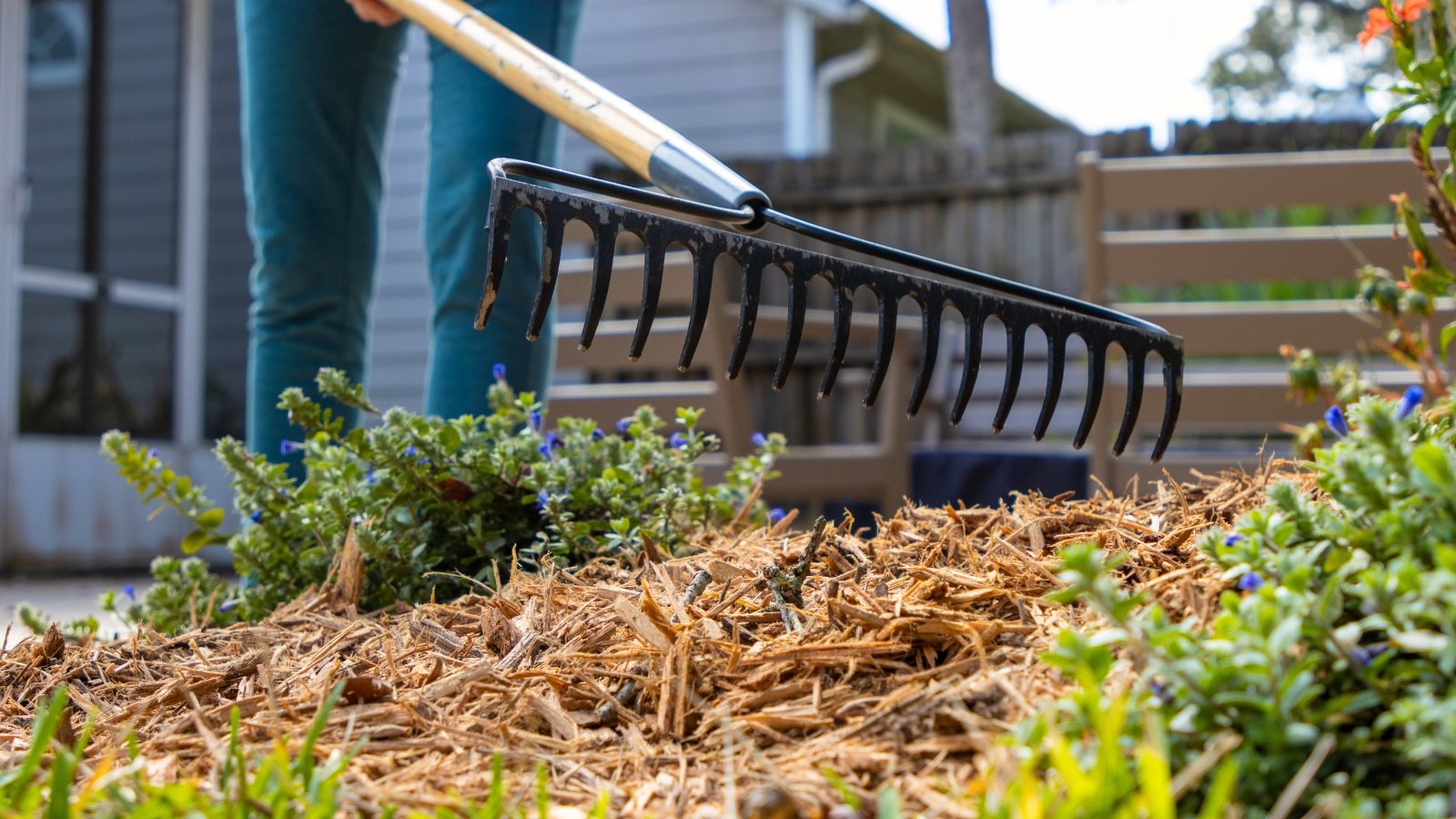 After pruning, mulch your beds to retain moisture and regulate soil temperature.
After pruning, mulch your beds to retain moisture and regulate soil temperature. In addition to pruning, fall maintenance includes providing an adequate mulch layer. Mulch helps regulate soil temperatures and retains moisture. It helps protect against frost heaving and natural freeze/thaw cycles. It also adds nutrients to the soil as it decomposes.
Compost, straw, bark nuggets, and leaves are good mulch materials. Take advantage of autumn’s leaf drop as a natural mulch. Fall leaves also provide habitat for overwintering pollinators, beneficial insects, and other garden inhabitants.
Water Through Frost
 Don’t forget to water when cold weather arrives.
Don’t forget to water when cold weather arrives. Water is beneficial heading into frosty conditions. Perennials absorb water until the ground freezes. Hardy roots and less stress entering the cool season support successful overwintering, and fall is prime for developing robust roots.
Dry soil freezes more quickly, too, which can damage roots. When water freezes, it produces heat, adding insulation to the plant.
Normal moisture supports turgidity (water-filled roots, stems, and leaves) and strengthens tissues against frost damage. Moisture allows stress-free natural processes to continue until dormancy.


 2 days ago
6
2 days ago
6

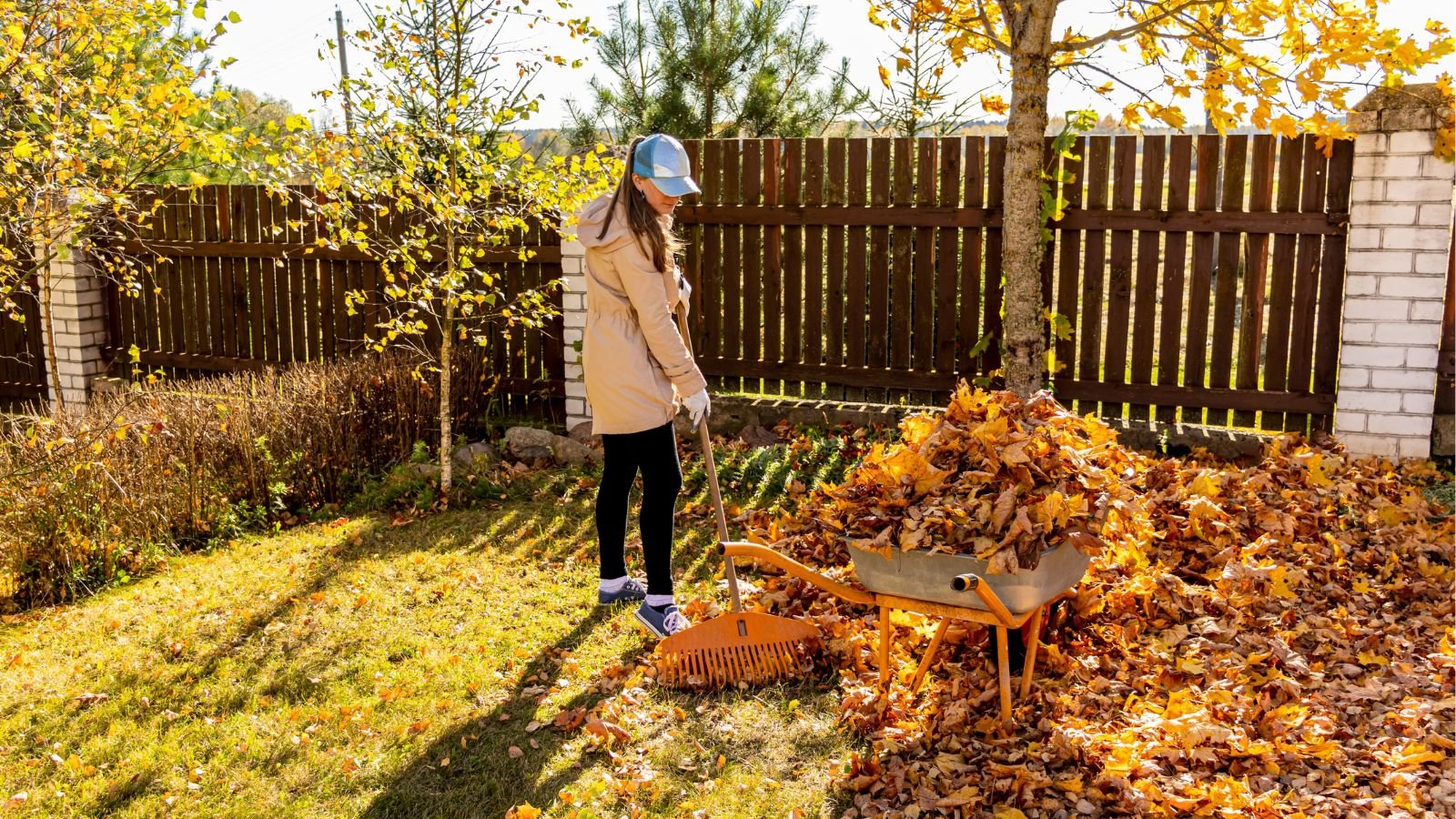
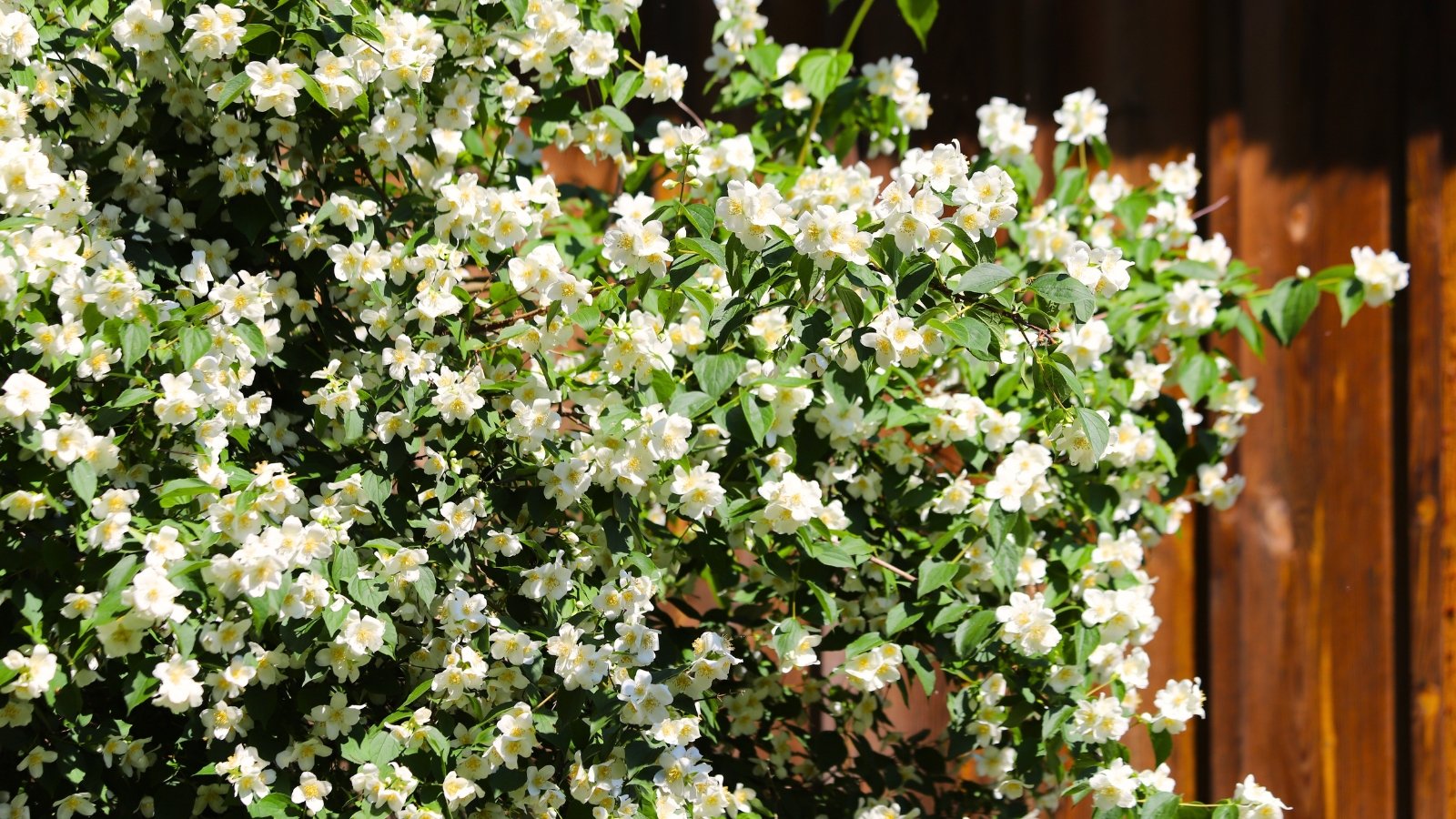
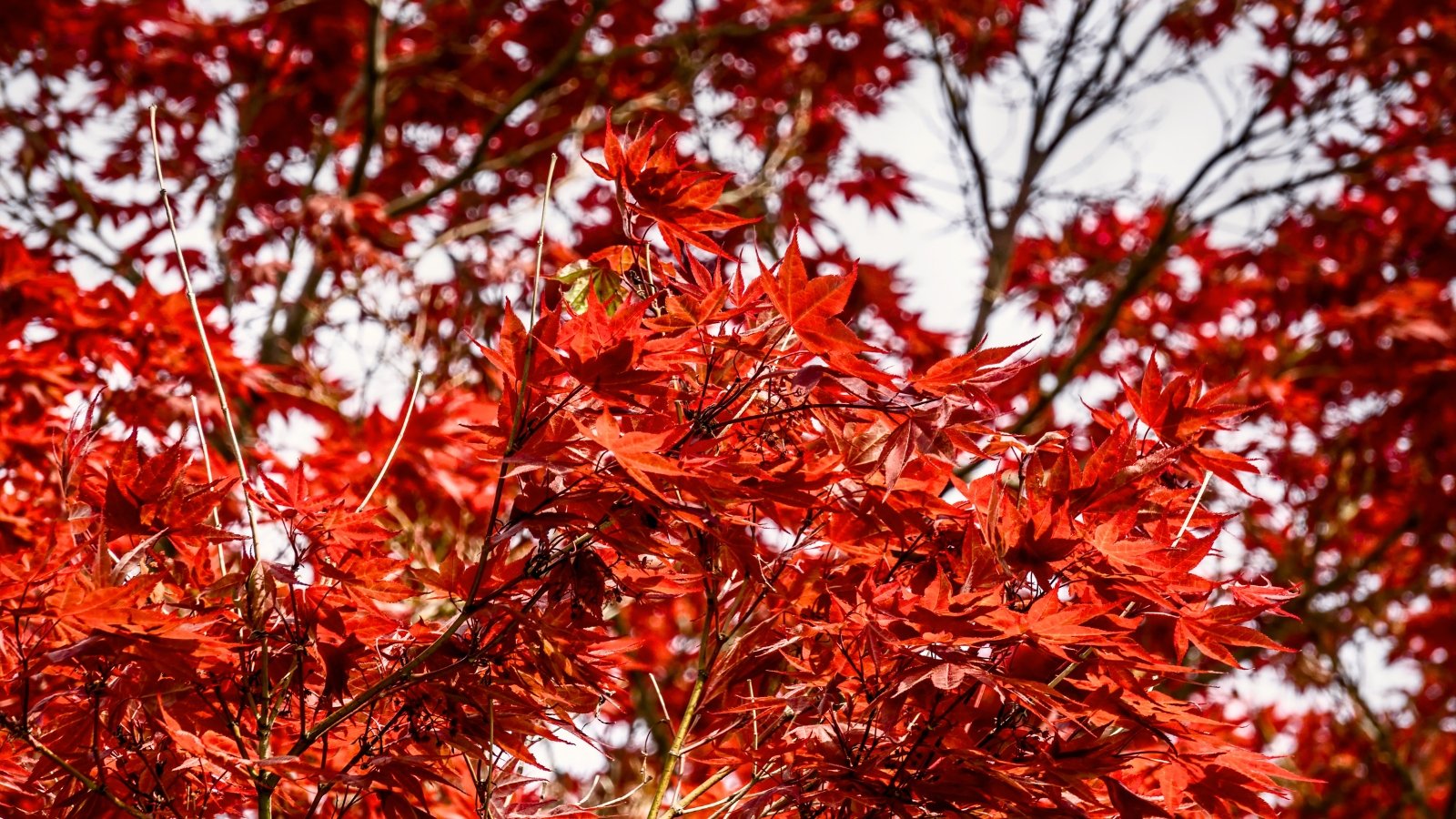
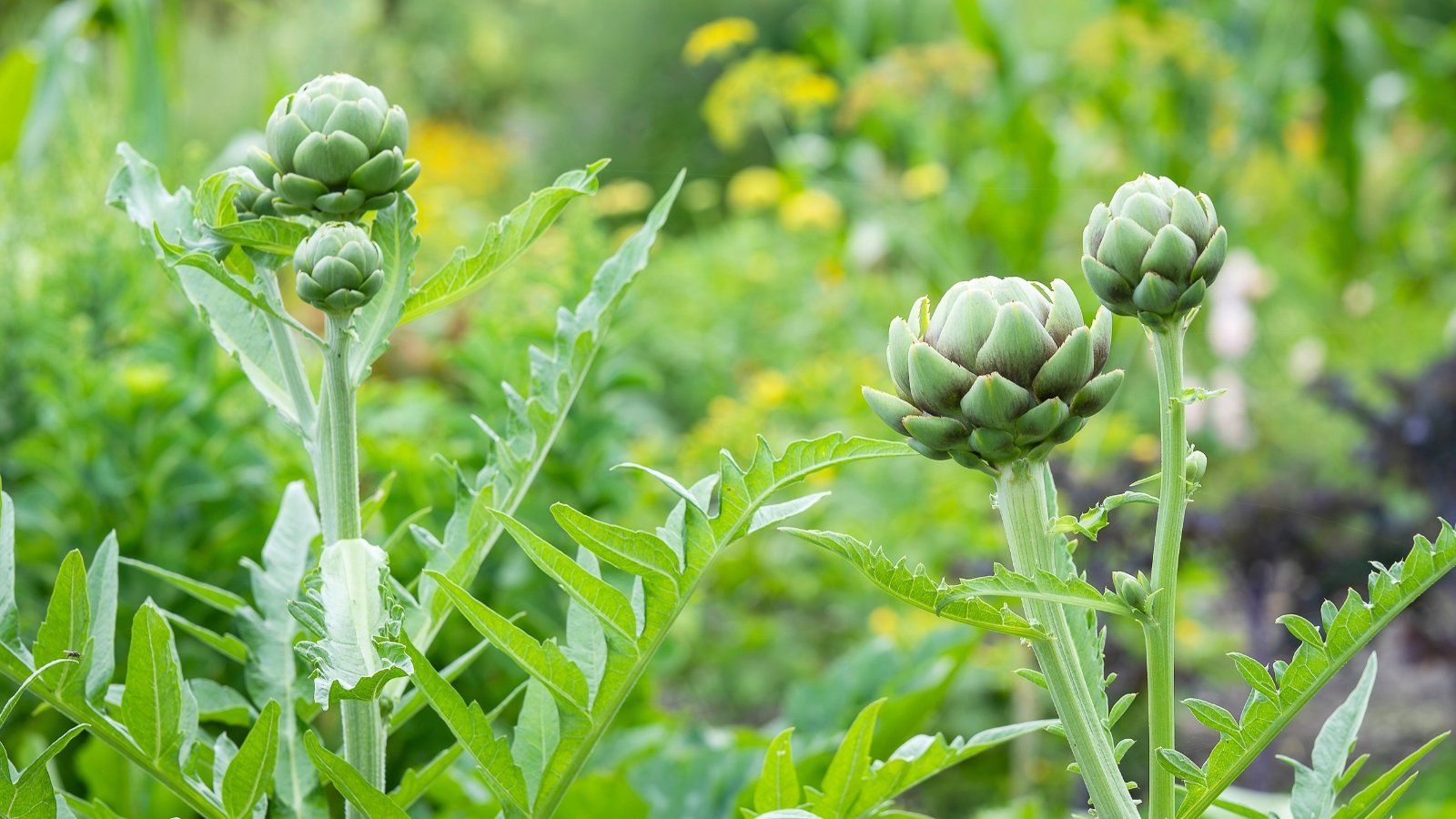
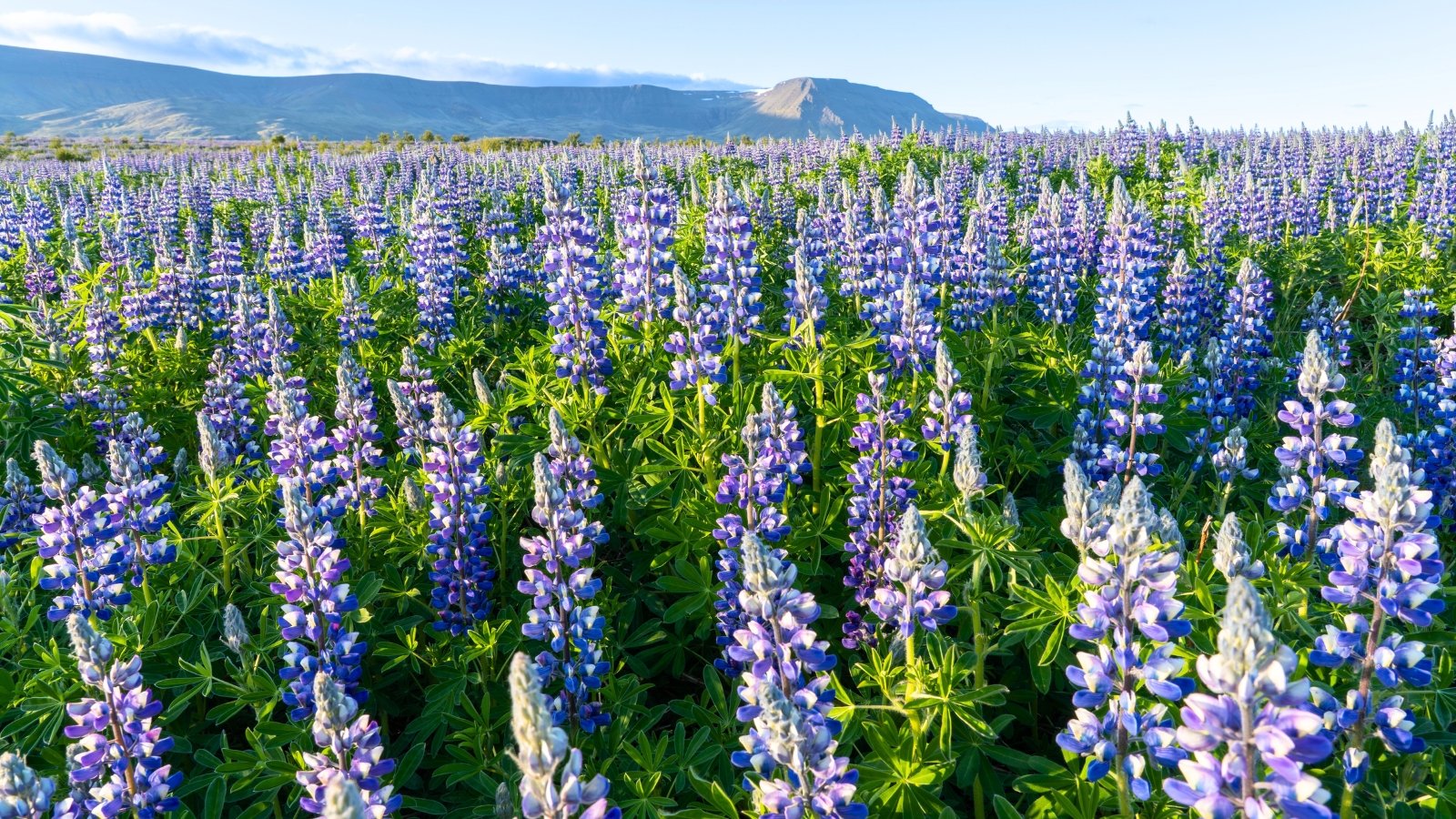
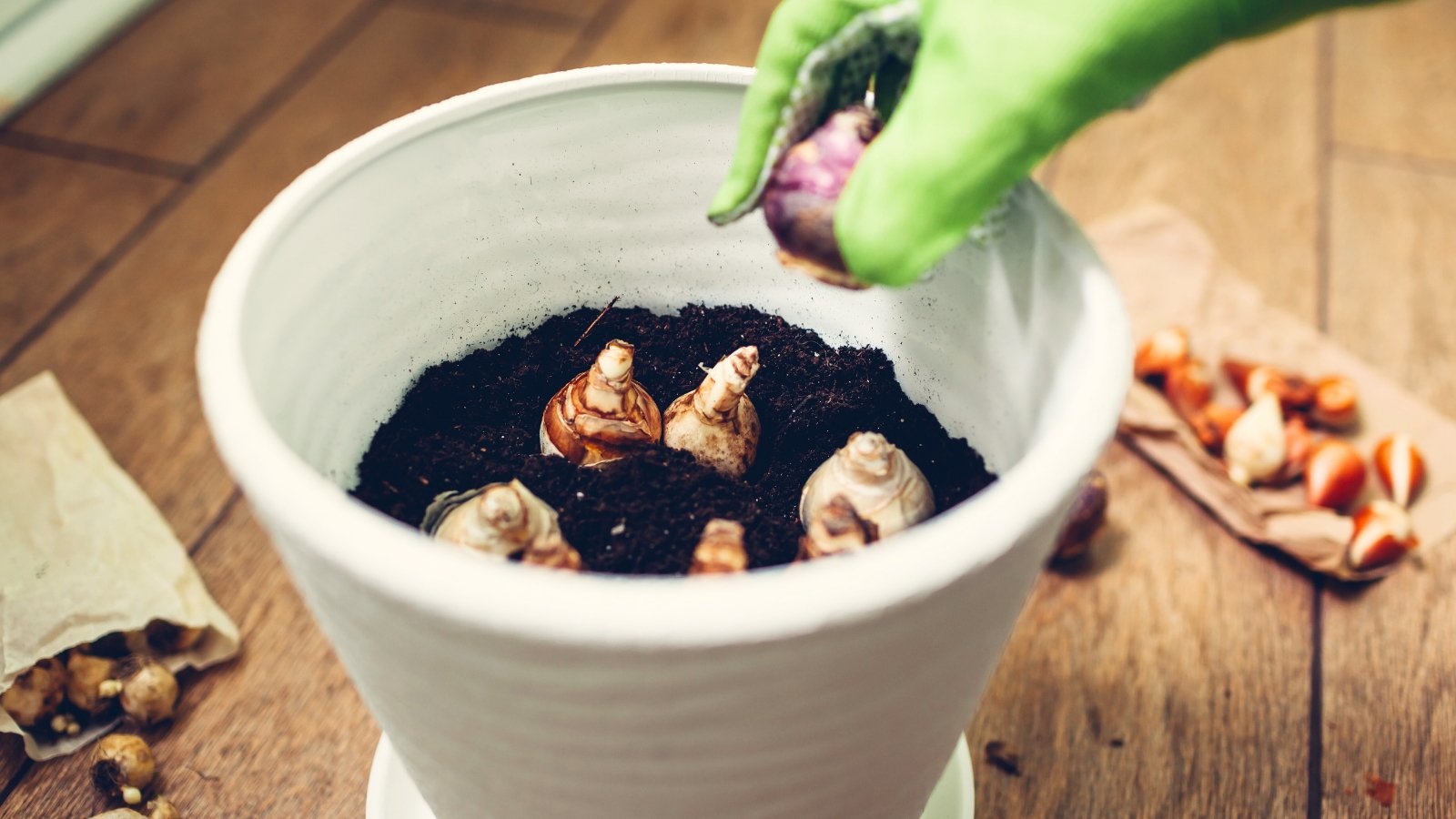














 English (US) ·
English (US) ·  French (CA) ·
French (CA) ·